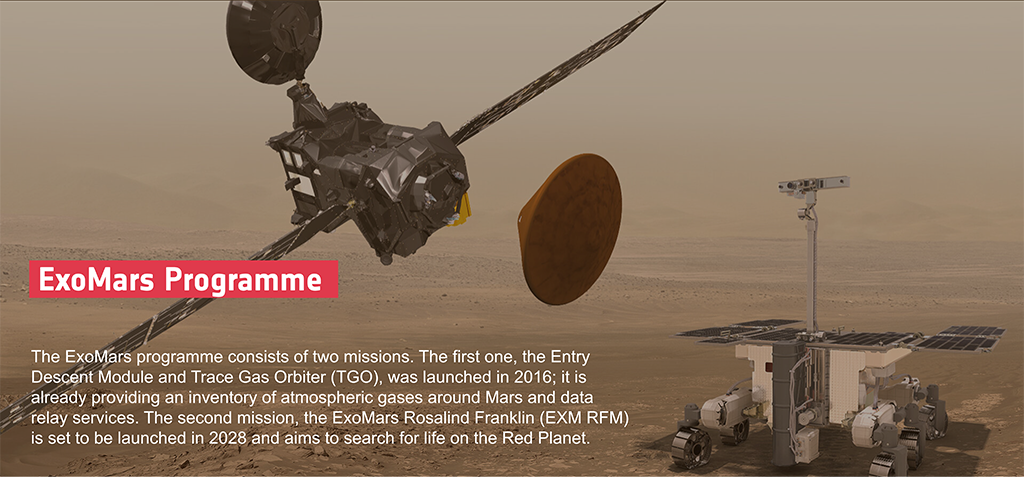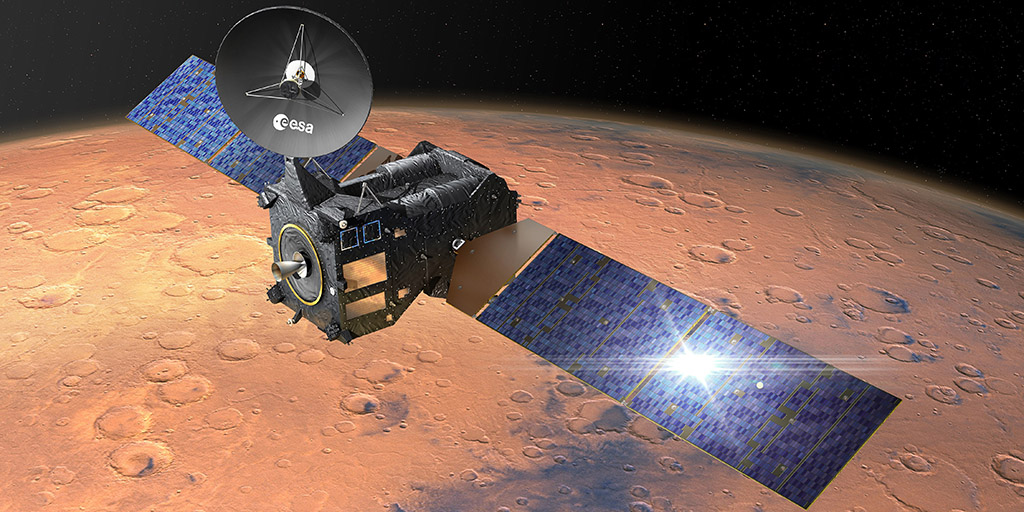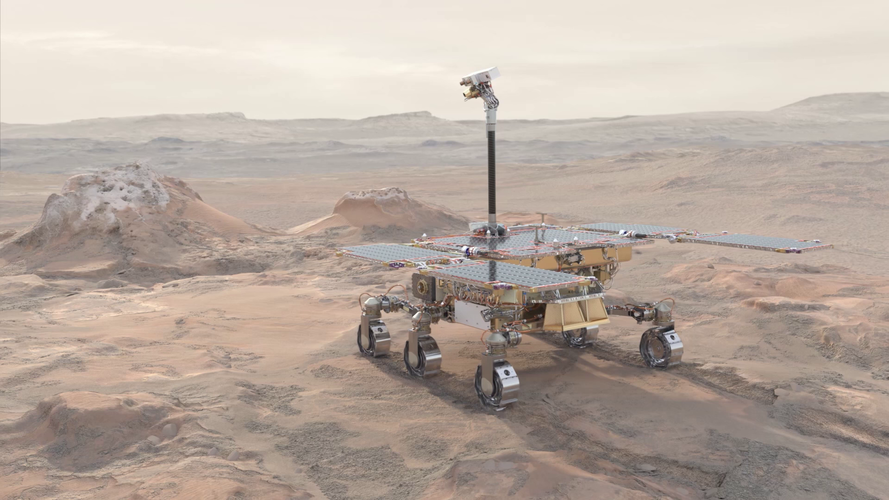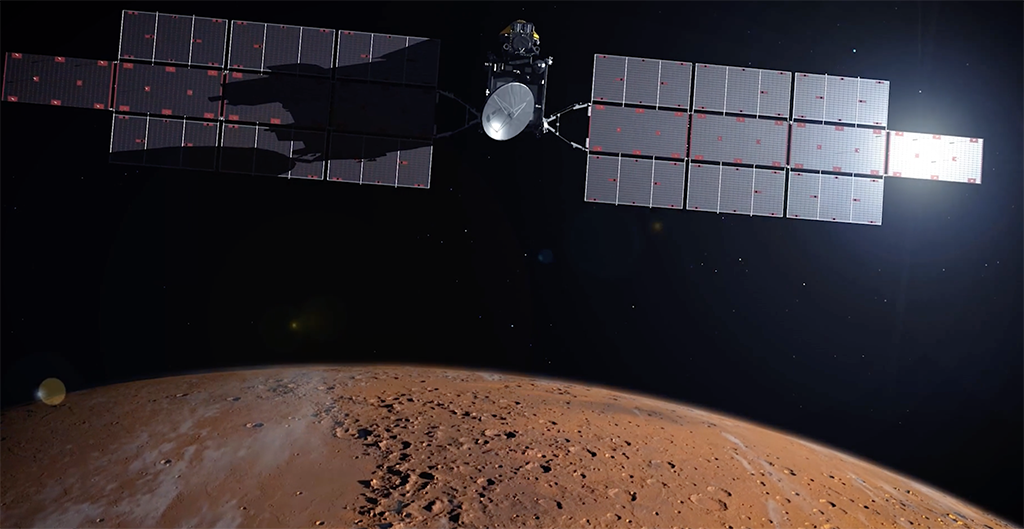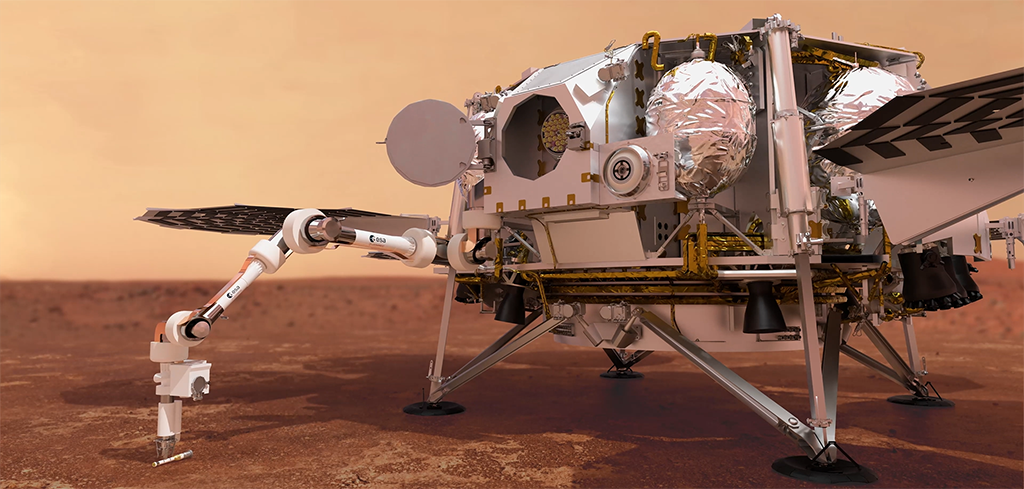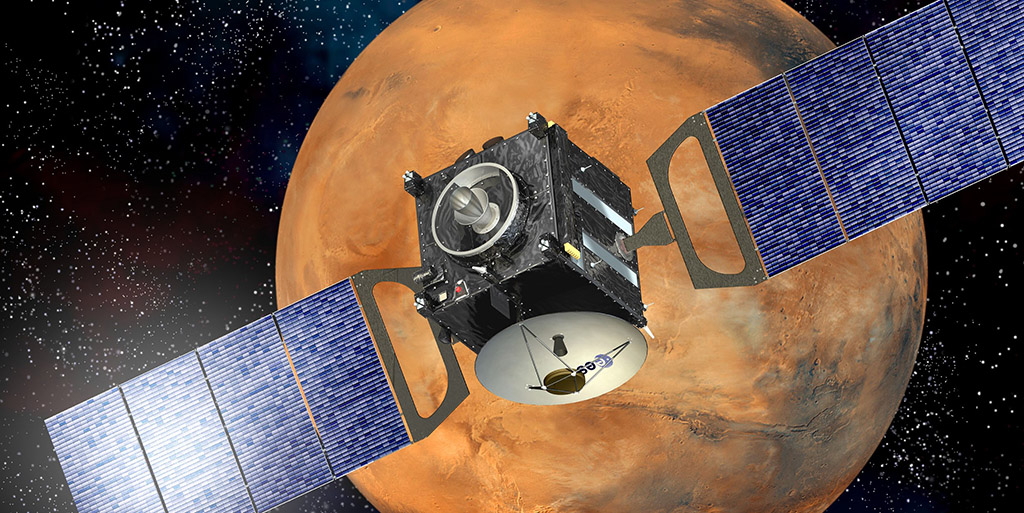Mars
2016 TGO ExoMars
The Trace Gas Orbiter is the first of two missions of the ESA ExoMars programme that will attempt to discover whether life has ever existed on Mars. The spacecraft arrived at the Red Planet in October 2016 and is making a detailed inventory of the atmosphere and mapping signatures of sub-surface water. It is capable of sniffing out the composition of the trace gases such as methane and water vapour. Because of the key role natural biological processes plays in Earth’s methane production, confirming the existence of methane on Mars and distinguishing between its potential sources, is a top priority of the Trace Gas Orbiter. In addition to its prime science mission, the orbiter also carries a sophisticated radio relay capability provided by NASA.
TGO also delivered the Schiaparelli entry, descent and landing demonstrator, which did not survive landing.
Planetary Protection requirements have been met by combination of analysis for the probability of impact calculation, cleaning, sterilisation, recontamination prevention. (Link to the PP report).
Read more: ExoMars/TGO | OPS Portal (esa.int)
ExoMars Rosalind Franklin
The ExoMars Rosalind Franklin (EXM RFM) aims to land the first European built rover on Mars by 2030, in the quest of finding extraterrestrial extant or extinct life. With its unique capability to drill over 2 metres below the surface, the European Space Agency (ESA) rover will be able to acquire and analyse pristine samples that have been protected from extreme conditions present at the surface (radiation, temperature, presence of salts). Given the ambitious scientific objectives, the Rosalind Franklin rover will be equipped with state-of-the-art, search for life instruments. As a result, the mission has been assigned a COSPAR PP category IVb. (COSPAR link)
Planetary Protection ensures that all instruments are kept clean of biological and molecular contamination during development, launch and mission on Mars. In other words, we do not want to find life on Mars that we accidentally have brought there ourselves, so we avoid forward contamination.
Read more: ESA - ExoMars rover
Mars Sample Return Campaign
The Mars Sample Return (MSR) campaign addresses the long-running objective of returning samples from Mars to have access to the full breadth and depth of science instruments available on Earth. Returned samples (such as rocks, regolith and atmosphere) are thought to contain evidence of habitable conditions and potential biosignatures, in the quest of searching for extraterrestrial life on the red planet. These samples will allow the scientific community to study the history of Mars for decades to come and help answer fundamental questions such as the evolution of past life in the solar system.
The first element of the MSR campaign, NASA’s Perseverance Rover, has been collecting samples from the Jezero Crater since 2021. NASA’s Sample Retrieval Lander (SRL) mission, as the second MSR element, will recover and store the samples and launch it into Mars orbit. The ESA Earth Return Orbiter (ERO)—the third MSR element—will rendezvous with the orbiting samples and make the return trip towards Earth. The SRL will have key contribution from ESA – the Sample Transfer Arm (STA), which will have function of recovering and transferring the sample to the launcher onboard of the SRL.
It will be the first mission to return scientifically selected samples from another planet and the first launch from the surface of another planet.
Read more: ESA - Mars sample return
Earth Return Orbiter
The Earth Return Orbiter (ERO) is one of three elements in the mission. The main task of the ERO is to pick up the samples delivered to Mars orbit and bring them back to Earth. There are several aspects done for the first time by the European Return Orbiter:
- The first interplanetary spacecraft to make a full round-trip from Earth to Mars.
- The first spacecraft to rendezvous and capture an object in orbit around another planet.
- The biggest spacecraft to orbit the Red Planet.
The unique Planetary Protection challenges for the ERO are related to backward contamination, to preserve Earth’s biosphere from the potential release of unsterilised particles from Mars. (Link to the Planetary Protection Reentry Safety Panel (PPRS)).
Read more: ESA - Earth Return Orbiter – the first round-trip to Mars
Sample Transfer Arm (STA)
The Sample Transfer Arm has the crucial task of transferring of the sample tubes collected from Mars and into the Orbital Sample container on the Mars Ascent Vehicle for subsequent launch into Mars Orbit. It will also perform the function of closing and sealing the Orbital Sample container.
The Sample Transfer Arm is equipped with various sensors, so it can see and touch the tubes on its own. The arm has 7 joints and two cameras (for redundancy purposes), both for its range of motion and its vision capability. In addition to the engineering challenges, the arm is subject to strict Planetary Protection requirements (part of SRL, COSPAR Category IVb), as it will be handling both the sample tubes themselves, as well as the containment system. This is once again a crucial role for Planetary Protection as at this stage in mission to avoid cross contamination from the STA to the samples.
Read more: ESA - A helping hand for Mars
Mars Express (2003)
For the last 20 years, Mars Express has been operating in orbit around Mars. It has provided the most complete map of the chemical composition of the atmosphere, studied Mars’ innermost moon Phobos in unprecedented detail, and traced the history of water across the globe, demonstrating that Mars once harboured environmental conditions that may have been suitable for life.
Mars Express is a COSPAR category III mission (https://cosparhq.cnes.fr/assets/uploads/2021/07/PPPolicy_2021_3-June.pdf), as such Planetary Protection requirement is met by calculating the probability of impact up to 50 years after launch.
Read more: ESA - Mars Express


